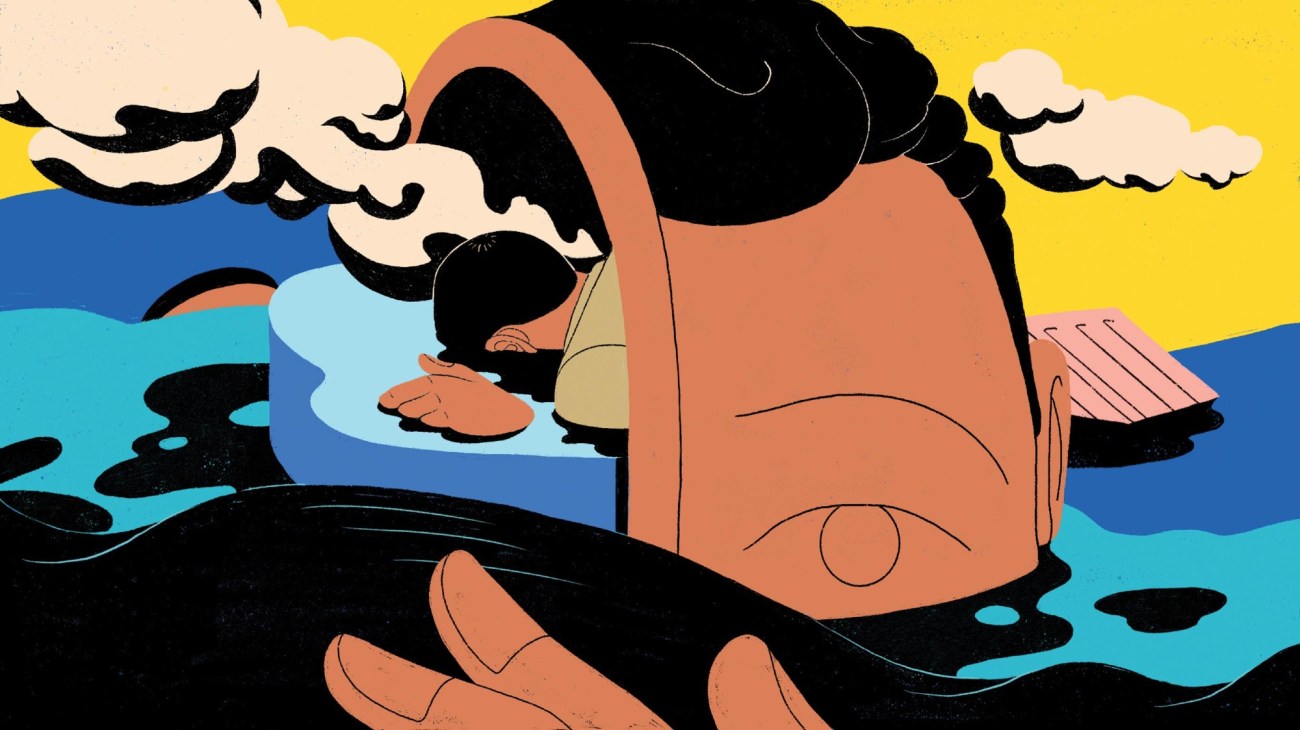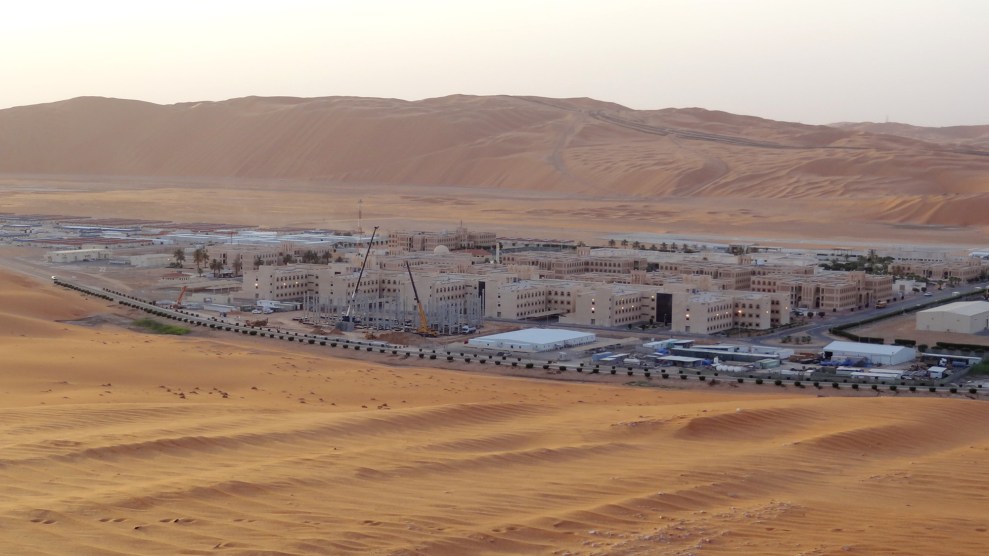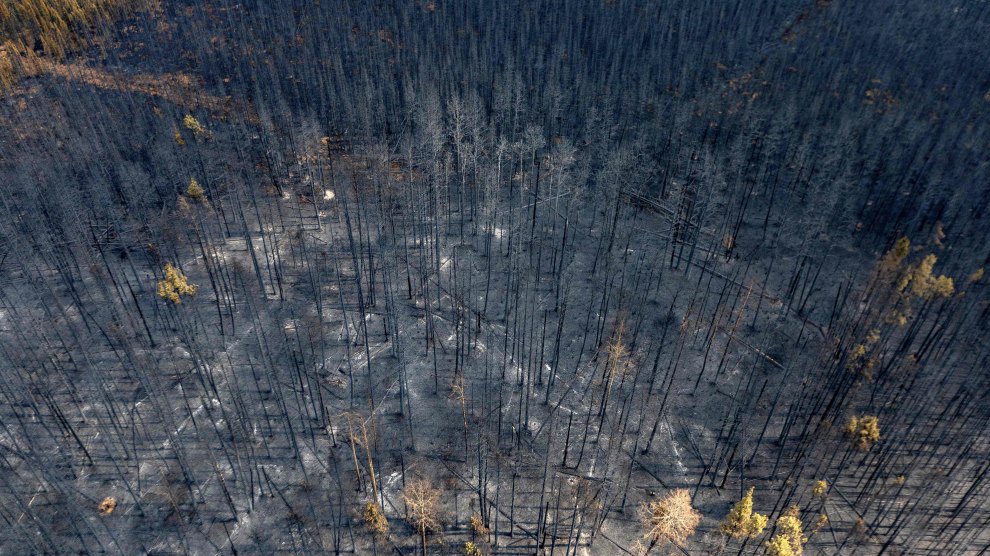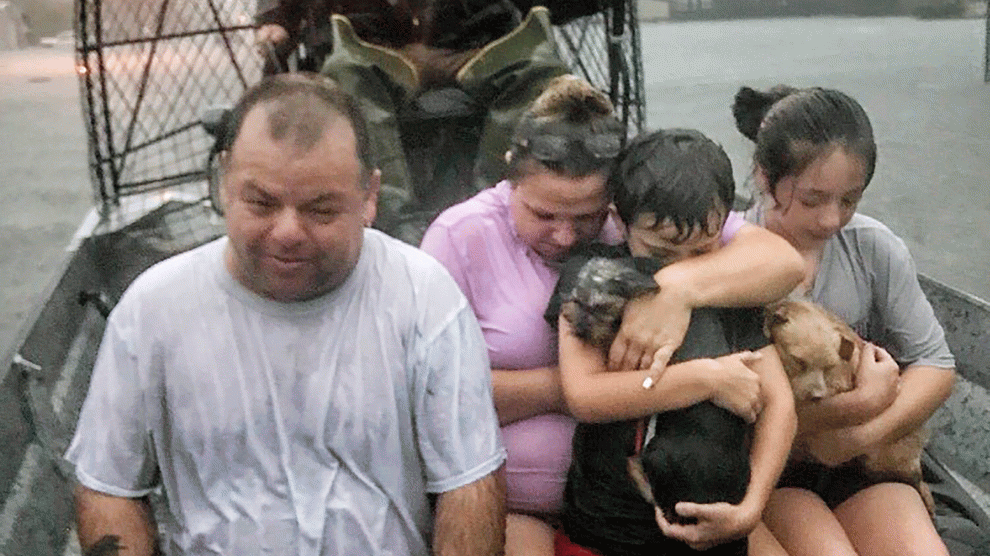This past December, as my mailbox overflowed with screener DVDs of prestige films and television shows designed to capture my vote for the Writers Guild of America Awards, I did what any respectable resident of cozy season would do: I pressed play on Partner Track, a playful romantic comedy series that the Netflix algorithm had been trying to convince me to watch for months.
The trailer promised beautiful clothes, pretty people, and humor as Ingrid Yun, played by Arden Cho, brings viewers into the world of a Korean American woman trying to make junior partner at a top-flight (and nearly all white) law firm while balancing the flirtations of an earnest philanthropic millionaire and a cheeky senior associate—who is also a rival. The show delivered on the trailer’s promise. But it also delivered something else—a stealth climate change plotline.
In her attempt to make partner, Yun works hard to close a deal wherein a large oil company, the ironically named Sun Corp, seeks to buy a smaller, family-run firm called Min Enterprises. But in a twist that’s absent from the book on which the series is based, Sun Corp ultimately has one goal in mind: gutting Min’s clean energy division.
That surprised me.
Years of working as an environmental reporter have given me what I jokingly call climate goggles. When I go outside, I see traces of climate change everywhere, like delicate tracks through a forest. But it’s still very rare to see climate plotlines on my television.
“We always said that the goal of this show is to be a fun, frothy rom-com,” says Georgia Lee, Partner Track’s showrunner. “But if we’re able to sneak in some commentary about stuff like structural racism and sexism, then we would be happy to do that. And if we can give a message about clean energy and the environment, so much the better.””
I’d reached out to Lee because I wanted to understand why she included climate change themes on the show, since so many shows don’t. A 2022 analysis by the USC Norman Lear Center’s Media Impact Project and the nonprofit consultancy Good Energy looked at 37,453 film and TV scripts produced between 2016 and 2020 and found climate references in only about 3 percent of the episodes.
There are limits to this analytical approach, which looks for specific words and can miss thematic content that doesn’t include them. For example, Don’t Look Up, a movie released outside of the study period, would likely fail their metric. Still, keyword analysis is useful for identifying trends.
Television (and streaming) are important because, well, we watch a lot—about three hours a day on average, according to the American Time Use Survey. The less we see climate change themes onscreen, the less inclined we are to take climate action. As Nina Metz, a television and film critic for the Chicago Tribune, recently pointed out, “The media we consume isn’t just entertainment. It seeps into our subconscious. And it shapes the way we think about the world, and the way we think about what’s possible.”
By that metric, what many of us think is possible is…nothing. While we dread the impacts of global warming, we often cope by ignoring the issue. According to a 2022 report from Yale’s Program on Climate Change Communication, two-thirds of Americans rarely or never discuss climate change with family and friends, and less than a quarter say they hear people they know talking about climate change at least once a month. We can’t fix a problem we don’t talk about.
Lee isn’t totally sure why she chose to include climate in the plot, except that her interest in the environment runs deep. “I was the founder of our environmental club in high school,” she tells me. And after the 2021 Huntington Beach oil spill, “I read a lot about people who were going and spending all the time [there] and living in tents and trying to help clean up the beaches.”
That became fodder for the backstory of Z, the son of Min Enterprises’ founder, who is trying to move the company into renewables—and also happens to be easy on the eyes. I found myself rooting for Yun to ditch her other suitors and go after Z instead.
Lee didn’t get any pushback from Netflix on the environmental subplot, but for Barbara Hall, creator and showrunner of the cbs political drama Madam Secretary, alienating viewers was a concern. That show, which had the most climate references of any cable program in the Lear Center’s report, casts Téa Leoni as secretary of state. One of Hall’s main goals was to find a way to discuss politics with less polarization. During the first five seasons of Madam Secretary, “we never named a political party for any of our people,” she says.
The first two seasons largely avoided climate change out of concern the show would “lose a block of viewers.” Yes, there were some quippy asides, jokes, and at least one epic rant about the climate, but eventually it got to the point where “it felt so important to the storytelling,” Hall says. “How can you talk about the world if you can’t talk about the effects of climate change and how it affects the State Department and diplomacy?”
She tackled the subject head-on in the season 3 opener, in which a tropical cyclone hits Bahrain, killing an ensign at a US naval base. The episode leveraged research suggesting that climate change could bring tropical cyclones to the Persian Gulf for the first time, and also Pentagon projections that the military will need to rebuild bases worldwide due to rising seas and extreme weather. “We thought if we came to it from the point of view of actual research from the Pentagon, it could bridge the gap, because the Pentagon isn’t exactly a bastion of liberal thought,” says Hall.

Madam Secretary was among the first shows to incorporate climate change organically, as part of our lived reality, according to Mika McKinnon, a field geophysicist and disaster researcher who has served as a scientific consultant on this and other television series and films. “Most of the time you saw climate change in the media, it was things like The Day After Tomorrow—it was really dramatic,” McKinnon says. “Madam Secretary was one of the first who just wanted it as part of their world-building, where it was just, ‘This is what is happening. If we want to tell stories from the world we live in, we’d better tell stories that include climate science.’”
“We definitely had feedback, people who were upset about it,” says Hall. Still, she’s surprised that more showrunners aren’t weaving climate change into their stories. For many, “the genre doesn’t require them to do it,” she notes. “You don’t necessarily have to talk about climate change in a cop show or law show or medical show.”
It’s true that if you don’t know much about climate change, incorporating it into your storytelling is hard. Organizations like the Writers Guild of America and the Producers Guild of America hold periodic workshops to help their members learn to do it. Dana Weissman-Scali, the director of programs for Writers Guild of America East (of which I am a member), says the goal isn’t for everyone to make stories that are about climate change, but rather that writers and showrunners don’t “pretend that this change isn’t happening, and that it isn’t affecting every aspect of human life on the planet.”
She points to one Ted Lasso plotline: Pro footballer Sam Obisanya refuses to wear a jersey bearing the name of a team sponsor whose parent company, the fictional Cerithium Oil, is ravaging Sam’s home country of Nigeria. The story mirrors alleged human rights abuses by Shell (Cerithium are shelled snails) and ends with the team ditching its fossil fuel sponsor and replacing it with a dating app.
Scientific consultants like McKinnon can also help bridge the gap. “The job is essentially being a science tutor and helping them come up with plausible underpinnings for the stories they’re going to tell. So, it’s a very creative science job. It’s a chance to play with science,” she says. And organizations such as the National Academy of Sciences’ Science and Entertainment Exchange can help connect writers and producers with scientists.
McKinnon consulted on one Madam Secretary episode in which smallpox breaks out from melting permafrost. “They wanted someone to talk to them about permafrost, about climate change, about what other hazards there might be, and what science was involved in this,” she recalls. “And particularly to help them sort out what was real science versus what was extremist conspiracy theories.”
This kind of help is invaluable—but it also presumes the creator already knows the story they’re trying to tell. For Madam Secretary, Hall says, “we would take things that are just starting to be in the news, and then we would game them out.”
Her approach is similar to the one taken by Scott Z. Burns in the buzzy new Apple TV+ series Extrapolations, whose cast includes Hollywood A-listers such as Meryl Streep and Forest Whitaker. Unlike in Madam Secretary and Partner Track, climate isn’t just part of the storyline—it’s the spine of the show. Burns, who produced An Inconvenient Truth back in the day, started with real scientific projections of what happens if we continue to emit greenhouse gases and extrapolated—get it?—to depict what our future could look like.
This fictional series is Burns’ attempt “to reach people who are outside the self-selecting documentary audience. Charts and graphs and the statistics around sea level rise or atmospheric carbon don’t always stir the emotions,” he told me. “So, as a storyteller, the task becomes how to take that science and turn it into narratives that are entertaining.”
It does so by showing characters whose lives are not dissimilar from our own—there are births and schools and bat mitzvahs—but all layered atop a warming world that could resemble our climate future. In Extrapolations, kids who experience high temperatures in utero are born with a congenital condition called summer heart, the whales are gone, Miami is disappearing, and the skies are relentlessly hazy from wildfires.
The series shows the effects of climate change from 2037 to 2070. Burns opted for the 2037 starting point “because that’s about as far into the future as The Hangover is in the past. And when you watch that movie, you don’t think of it as a period piece. We didn’t want to make it easy for people to push the show away because it had flying cars in it, or other things that aren’t a part of our lives.”
Some early reviewers described Extrapolations as dystopian—conjuring images of Mad Max or The Hunger Games—but that’s inaccurate. There’s nothing postapocalyptic or unusually totalitarian in the future Burns sketches out. It is, however, bleak: At one point, Whitaker’s character comments forlornly, “I want wilderness.”
The series ends on a hopeful note, but after a lot of pain and devastation, and I couldn’t help but wonder about its intended audience. If you’re already well versed in climate change, Extrapolations has few new scientific insights. And if you’ve been coping with climate change, as the Yale report suggested, by ignoring it, this show is unlikely to shake you from your stupor. Watching Extrapolations helped clarify why I appreciate how Partner Track and Madam Secretary make climate a part of contemporary plotlines, showing ordinary people waking up to catastrophe and pushing for change.
More and more, the people who put up cash to develop movies and films don’t want dystopian climate stories, “because it basically absolves people of responsibility and makes them sort of throw their hands up and say, ‘We’re done for. There’s nothing I can do, so why bother?’” says WGA East’s Weissman-Scali. “Whereas depictions of steps that people can take that can contribute to a viable future empower people.”
This idea of empowerment can come in many forms. Released this past spring, the independent film How to Blow Up a Pipeline follows a group of young environmental activists—including one whose terminal cancer diagnosis is inextricable from the fact of her upbringing in the shadow of an oil refinery—as they plot to blow up a pipeline.
The fictional story is based loosely on a 2021 nonfiction book of the same name by Andreas Malm, who counters the false belief that only nonviolent social movements succeed, by laying out how violence and nonviolence exist in tension with each other. The suffragists destroyed property, he correctly points out. Martin Luther King Jr. kept guns for his own protection. And “there is a long and venerable tradition of sabotaging fossil fuel infrastructure,” Malm writes. For example, the African National Congress mined a state-owned coal liquefaction facility in the 1980s as part of its anti-apartheid campaign. Colombian leftists punched so many holes in one key pipeline that people started calling it “the flute.”
These actions were not inspired by climate change, but in Malm’s retelling, they raise questions about how far is too far in defense of the planet. State and federal agencies have reportedly alerted local law enforcement about the film’s potential to inspire mayhem. Whether that’s empowering depends on one’s perspective, but it does say something about the power of film and television.
















